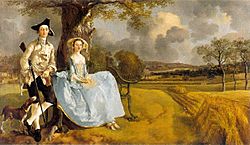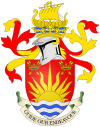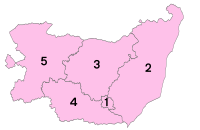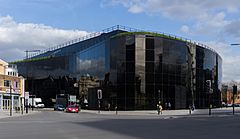Suffolk facts for kids
Quick facts for kids
Suffolk
|
|||||||||||||||||||||||||||||||||||||||||||||||||||||||
|---|---|---|---|---|---|---|---|---|---|---|---|---|---|---|---|---|---|---|---|---|---|---|---|---|---|---|---|---|---|---|---|---|---|---|---|---|---|---|---|---|---|---|---|---|---|---|---|---|---|---|---|---|---|---|---|
|
|||||||||||||||||||||||||||||||||||||||||||||||||||||||
| Motto(s):
"Guide Our Endeavour"
|
|||||||||||||||||||||||||||||||||||||||||||||||||||||||
 |
|||||||||||||||||||||||||||||||||||||||||||||||||||||||
| Sovereign state | United Kingdom | ||||||||||||||||||||||||||||||||||||||||||||||||||||||
| Constituent country | England | ||||||||||||||||||||||||||||||||||||||||||||||||||||||
| Region | East | ||||||||||||||||||||||||||||||||||||||||||||||||||||||
| Established | Ancient | ||||||||||||||||||||||||||||||||||||||||||||||||||||||
| Time zone | UTC±00:00 (Greenwich Mean Time) | ||||||||||||||||||||||||||||||||||||||||||||||||||||||
| • Summer (DST) | UTC+01:00 (British Summer Time) | ||||||||||||||||||||||||||||||||||||||||||||||||||||||
| Members of Parliament | List of MPs | ||||||||||||||||||||||||||||||||||||||||||||||||||||||
| Police | Suffolk Constabulary | ||||||||||||||||||||||||||||||||||||||||||||||||||||||
|
|||||||||||||||||||||||||||||||||||||||||||||||||||||||
Suffolk is a county in East Anglia, England. It shares borders with Norfolk to the north, Cambridgeshire to the west, and Essex to the south. The North Sea is to its east.
The main town and county seat is Ipswich. Other important towns include Lowestoft, Bury St Edmunds, Newmarket, and Felixstowe. Felixstowe has one of Europe's largest container ports.
Suffolk is mostly flat, but it has some hills, especially in the west. It is well-known for its large farming areas. Much of the land is used for growing crops. The county also has wetlands called the Broads in the north. The Suffolk Coast & Heaths and Dedham Vale are special natural areas. They are called Areas of Outstanding Natural Beauty.
Contents
History of Suffolk
How Suffolk Was Governed
Around the 400s AD, a group called the Angles took control of this area. England and East Anglia are named after them. The Angles later became the "north folk" (Norfolk) and the "south folk" (Suffolk). Suffolk and nearby areas formed the kingdom of East Anglia. This kingdom later joined with other kingdoms like Mercia and Wessex.
Suffolk was once split into four parts for local government. By 1860, it had two main parts. The eastern part was managed from Ipswich, and the western part from Bury St Edmunds. In 1888, these two parts became separate counties: East Suffolk and West Suffolk. Ipswich became a special town with its own government. Some areas from Essex were also added to Suffolk.
On April 1, 1974, East Suffolk, West Suffolk, and Ipswich joined to form the single county of Suffolk. The county was then divided into smaller areas called local government districts. These included Babergh, Forest Heath, Ipswich, Mid Suffolk, St. Edmundsbury, Suffolk Coastal, and Waveney. Some land near Great Yarmouth was moved to Norfolk.
There have been talks about changing Suffolk's local government again. One idea was to split it into two parts. Another was to have one government for the whole county. But in 2010, the government decided not to make any big changes. So, Suffolk's government structure remains the same.
Ancient Discoveries in Suffolk
West Suffolk is famous for archaeological finds. People have found items from the Stone Age, Bronze Age, and Iron Age here. Many Bronze Age objects were found near Mildenhall, West Row, Eriswell, and Lakenheath.
These bronze items include swords, spearheads, arrows, and axes. There are also knives, daggers, and even pieces of armor. Many of these finds are kept at the St. Edmundsbury heritage service. It is located at West Stow, near Bury St. Edmunds. Other discoveries include old burial sites.
In the east of Suffolk, you can find Sutton Hoo. This is one of England's most important Anglo-Saxon archaeological sites. It is a ship burial site. Inside, people found amazing treasures. These included a Sword of State, gold and silver bowls, and beautiful jewelry. A lyre, an ancient musical instrument, was also found.
Geography of Suffolk
Suffolk has several towns. Ipswich is the largest and has the most people. In 2011, about 730,000 people lived in Suffolk. About 133,384 of them lived in Ipswich. The table below shows towns with over 20,000 people.
| Rank | Town | Population | Borough/District council |
|---|---|---|---|
| 1 | Ipswich | 133,384 (2011) | Ipswich Borough Council |
| 2 | Lowestoft | 71,000 (2011) | Waveney Council |
| 3 | Bury St Edmunds | 42,000 (2011) | St Edmundsbury Council |
| 4 | Haverhill | 27,041 (2011) | St Edmundsbury Council |
| 5 | Felixstowe | 23,689 (2011) | Suffolk Coastal Council |
| 6 | Newmarket | 20,384 (2011) | Forest Heath District Council |
Suffolk is in the East of England. Much of the land is low. It is made of Pleistocene sand and clay. These soft rocks mean the coast is eroding quickly. Walls and other structures protect some towns. But some houses on cliffs have fallen into the sea. Protecting the coastline is a big topic of discussion.
The eastern coast has an area of heathland called "The Sandlings." It runs along almost the entire coastline. Suffolk also has nature reserves. These include the RSPB site at Minsmere. Trimley Marshes is a wetland protected by the Suffolk Wildlife Trust.
The west of the county has harder Cretaceous chalk rock. This chalk forms rolling downland hills. These hills stretch from Dorset to Yorkshire. The chalk does not erode easily, so it forms Suffolk's only major hills. The highest point is Great Wood Hill. It is near the village of Rede and is 128 meters (420 feet) high.
The county flower of Suffolk is the oxlip.
People of Suffolk
In 2014, Suffolk had about 738,512 people. The number of males and females was almost equal. About 22% of the people were aged 65 or older. Most of the population, about 90.84%, were "White British".
In the past, most people in Suffolk worked in farming. A survey from 1835 showed that many people were farm laborers. Others worked in shops or crafts.
People from English counties often have nicknames. For example, people from Yorkshire are called 'Tykes'. A traditional nickname for people from Suffolk is 'Suffolk Fair-Maids'. This name refers to the idea that women from Suffolk were very beautiful in the Middle Ages.
Another nickname is 'Silly Suffolk'. This comes from an old English word, sælig, which means blessed. It refers to the county's long history of Christianity. Suffolk has many beautiful churches and the important Bury Abbey. The term 'Silly Suffolk' has been used since at least 1819.
Culture and Fun in Suffolk
Local Talk
The way people speak in Suffolk, called the Suffolk dialect, is special and easy to recognize.
Sports in Suffolk
Football
Suffolk's only professional football team is Ipswich Town. The club started in 1878. They won the Football League in 1961–62. They also won the FA Cup in 1977–78 and the UEFA Cup in 1980–81. Ipswich Town now plays in the Football League Championship. Other local teams include Lowestoft Town, Bury Town, and Leiston.
Horse Racing
The town of Newmarket is the center of British horseracing. It has many training yards for horses. Important horse racing groups like the National Stud are also there. Newmarket Racecourse is a famous place for races. Tattersalls, which sells racehorses, and the National Horseracing Museum are also in Newmarket.
Speedway
Speedway racing has been in Suffolk since the 1950s. The Foxhall Stadium near Ipswich is home to the Ipswich Witches. The Witches are in the Premier League, which is the UK's second division. The Mildenhall Fen Tigers are another speedway team from Suffolk.
Cricket
Suffolk C.C.C. plays in the Minor Counties Cricket Championship. They have won the championship three times. They also won the MCCA Knockout Trophy once. Home games are played in towns like Bury St Edmunds, Ipswich, and Mildenhall.
Arts and Festivals
The Aldeburgh Festival started in 1948. It was created by Benjamin Britten. It is one of the UK's biggest classical music festivals. It began in Aldeburgh and moved to Snape Maltings in 1967. Since 2006, Henham Park has hosted the Latitude Festival. This outdoor festival has popular music, comedy, poetry, and book events.
The FolkEast festival happens at Glemham Hall in August. It brings together musicians from around the world. It also supports local businesses and crafts. The LeeStock Music Festival is held in Sudbury.
Suffolk in Books and TV
Many stories are set in Suffolk. Parts of David Copperfield by Charles Dickens happen here. The Fourth Protocol by Frederick Forsyth and Unnatural Causes by P. D. James are also set in Suffolk. Dodie Smith's The Hundred and One Dalmatians and The Rings of Saturn by W. G. Sebald feature the county. Arthur Ransome's children's books, We Didn't Mean to Go to Sea and Coot Club, are also set in Suffolk. Roald Dahl's short story The Mildenhall Treasure takes place in Mildenhall.
The TV show Lovejoy, about an antiques dealer, was filmed in Suffolk. The reality TV show Space Cadets was filmed in Rendlesham Forest. The show tricked people into thinking they were in Russia. Other TV shows and movies have also filmed in Suffolk. These include Detectorists, Kavanagh QC, Iris, and Drowning by Numbers.
The Rendlesham Forest incident is a famous UFO event in England. Some people call it "Britain's Roswell."
The song "Castle on the Hill" by singer-songwriter Ed Sheeran is about Suffolk. He said it was a "love letter to Suffolk." The song mentions his hometown of Framlingham and Framlingham Castle.
Suffolk's Economy
Most farming in Suffolk is for growing crops or a mix of crops and animals. Farms can be very different in size. The soil also varies, from heavy clay to light sand. Farmers grow crops like winter wheat, winter barley, sugar beet, and oilseed rape. They also grow beans and linseed.
Farming is still very important in Suffolk. This is shown by the Suffolk Show. It happens every May in Ipswich. Even though it has changed over time, it is still mainly a show about agriculture.
Many well-known companies are in Suffolk. These include Greene King and Branston Pickle in Bury St Edmunds. Birds Eye has its biggest UK factory in Lowestoft. There, they process all their meat and frozen vegetables. The UK horse racing industry is based in Newmarket.
There are two USAF bases in the west of the county. Sizewell B nuclear power station is on the coast near Sizewell. Bernard Matthews Farms has processing units in the county. Southwold is home to Adnams Brewery. The Port of Felixstowe is the largest container port in the UK. Other ports are in Lowestoft and Ipswich. BT has its main research center at Martlesham Heath.
Learning in Suffolk
Schools and Colleges
Suffolk has a comprehensive education system. This means schools are open to all students, no matter their ability. There are also fourteen independent schools.
For a while, some parts of Suffolk had a special school system. It had primary schools (ages 5–9), middle schools (ages 9–13), and upper schools (ages 13–16). But in 2006, Suffolk decided to change to the more common system. Now, most schools are primary (ages 5-11) and high schools (ages 11-16).
Many of the high schools have a sixth form. This is where students can study for A-level exams. Most colleges in Suffolk also offer A-level courses. Suffolk's schools are generally large. Ipswich has the most students, and Forest Heath has the fewest.
Some independent boarding schools in Suffolk include The Royal Hospital School near Ipswich. Others are Culford School, Framlingham College, and Woodbridge School.
Sixth form colleges include Lowestoft Sixth Form College and One in Ipswich. Suffolk also has four further education colleges. These are Lowestoft College, Easton & Otley College, Suffolk New College (Ipswich), and West Suffolk College (Bury St Edmunds).
University in Suffolk
Suffolk has one university, the University of Suffolk. It has campuses in different towns. Before August 2016, it was called University Campus Suffolk. It worked with the University of Essex and the University of East Anglia. The University of Suffolk welcomed its first students in 2007. Before that, Suffolk was one of only four counties in England without a university campus.
The University of Suffolk became a full university in 2016. Its main campus is in Ipswich. Other campuses are in Lowestoft, Bury St. Edmunds, and Great Yarmouth in Norfolk. The university has two main academic departments. Many of its students are adults who are returning to education.
Famous People from Suffolk

Suffolk is known for two of England's best painters: Thomas Gainsborough and John Constable. The area around the Stour Valley is even called "Constable Country." Benjamin Britten, a famous composer, also lived here. Other artists include Sir Alfred Munnings and Dame Elizabeth Frink. The cartoonist Carl Giles is also from Suffolk. A bronze statue of his character "Grandma" is in Ipswich.
Poets George Crabbe and Robert Bloomfield were born in Suffolk. Writers like Adrian Bell and Ruth Rendell also have ties to the county. Actors Ralph Fiennes and Bob Hoskins, singer Kerry Ellis, and musician Brian Eno are from Suffolk. The famous singer-songwriter Ed Sheeran and soprano Christina Johnston are also from here.
Hip hop DJ Tim Westwood and radio presenter John Peel lived in Suffolk. Painter Maggi Hambling was born and lives in Suffolk. Author Norah Lofts lived in Bury St. Edmunds for many years. Sir Peter Hall, who started the Royal Shakespeare Company, was born in Bury St. Edmunds. Theatre director Sir Trevor Nunn was born in Ipswich. Model Claudia Schiffer and her husband, director Matthew Vaughn, own a house in Suffolk.
In sports, Suffolk is linked to Formula One boss Bernie Ecclestone. Footballers like Terry Butcher, Kieron Dyer, and Matthew Upson are from here. Many jockeys live in Newmarket, the center of horse racing. These include Lester Piggott and Frankie Dettori.
Important religious figures from Suffolk include Simon Sudbury, an archbishop. Cardinal Thomas Wolsey was from Ipswich. The monk and writer John Lydgate was also from Suffolk. Edward FitzGerald, who translated The Rubaiyat of Omar Khayyam, was born in Bredfield. The abolitionists Thomas Clarkson and Richard Dykes Alexander lived near Ipswich.
Other notable people include suffragette Dame Millicent Garrett Fawcett. Robert FitzRoy, captain of HMS Beagle, was from Suffolk. The "Witch-finder General" Matthew Hopkins also lived here. Elizabeth Garrett Anderson was Britain's first female doctor and mayor. The charity leader Sue Ryder lived in Cavendish. The writer George Orwell lived in Southwold. He is said to have chosen his pen name from Suffolk's River Orwell.
Saint Edmund of East Anglia
Saint Edmund was the King of East Anglia. He was a Christian martyr. He was killed by invading Danes in 869. The town of Bury St Edmunds is named after him. Saint Edmund was the patron saint of England until the 1200s. In 2007, he was named the patron saint of Suffolk. Saint Edmund's Day is on November 20. His flag is flown in Suffolk on that day.
Images for kids
-
Excavation of the Sutton Hoo burial ship in 1939
-
Snape Maltings Concert Hall; formerly a Victorian maltings, now converted into a world-famous concert venue
-
Framingham Castle, the setting which inspired Ed Sheeran's "Castle on the Hill" song
-
Ickworth House close to Bury St Edmunds
-
Southwold, a popular seaside town
-
Lavenham is a preserved medieval village
-
Bank of the River Orwell
-
Aldeburgh beachfront
-
Ancient Cottages in Kersey
-
Lighthouse at Orford Ness, a national trust site
See also
 In Spanish: Suffolk para niños
In Spanish: Suffolk para niños




















